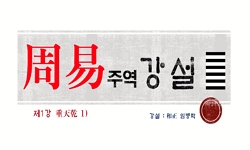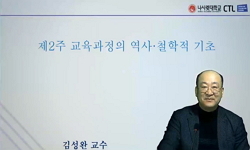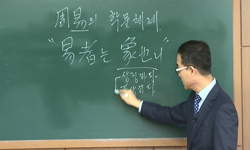Interpreting 'Yulneochunhyang soojulga' through the use of Wuxing's Principle Jang, Soon Hee Major in Korean Education Graduate School of Education Pusan National University Abstract This study is based on the novel 'Wanjoo edition of <Yulneochun...
http://chineseinput.net/에서 pinyin(병음)방식으로 중국어를 변환할 수 있습니다.
변환된 중국어를 복사하여 사용하시면 됩니다.
- 中文 을 입력하시려면 zhongwen을 입력하시고 space를누르시면됩니다.
- 北京 을 입력하시려면 beijing을 입력하시고 space를 누르시면 됩니다.
https://www.riss.kr/link?id=T11470949
- 저자
-
발행사항
부산 : 부산대학교, 2008
-
학위논문사항
학위논문(석사)-- 부산대학교 : 국어교육전공 고전소설 2008. 8
-
발행연도
2008
-
작성언어
한국어
- 주제어
-
발행국(도시)
부산
-
형태사항
50 ; 26 cm
-
일반주기명
지도교수: 김병권
- DOI식별코드
- 소장기관
-
0
상세조회 -
0
다운로드
부가정보
다국어 초록 (Multilingual Abstract)
Interpreting 'Yulneochunhyang soojulga'
through the use of Wuxing's Principle
Jang, Soon Hee
Major in Korean Education
Graduate School of Education
Pusan National University
Abstract
This study is based on the novel 'Wanjoo edition of <Yulneochunhyang soojulga>' The aim of the study is to find a way of understanding in the the classic Korean novel and contents to study, so this search is to analyze and interpret this novel as a text by using the Wuxing's Principle.
The study assumes that a way of understanding and explaining the literary work is through the principle itself. In the novel they fit well together as a couple. This is well expressed in the Sibjangga(thrashing 10 times song), at the peak of Chunhyang's resistance against Byunhakdo (Mongryong's rival). The relationship between Chunhyang and Mongryong is not a simple union but a destined one, according to the Wuxing's Principle, which theorises on the combination of the five elements of the earth (metal, wood, water, fire and earth). From this idea I will analyze the novel, looking from the perspective of the Yin-Yang using the Wuxing's Principle.
Going further into Chunhyangjeon's plot, the relationship between the two characters (susangmok) can be seen from two different standpoints; individual and social. From the individual susangmok standpoint, Sung Chunhyang achieved her desire by devoting herself to only one man, even though she knew she would be punished for it, and in turn Lee Mongryong helped her achieve her desire by saving her from the evil governor Byunhakdo. From the standpoint of the social susangmok, Lee Mongryong belonged to the upper classes of old Korea, as he was the son of a governor, and Sung Chunhyang was a commoner who was associated with the lower classes of society. Despite this, they fell in love, and eventually, he saved her (as water saves tree) and helped her achieve her desire of being together with him. The Wuxing's Principle, in this case, shows that susangmok can overcome many obstacles.
The contents of this study are taken from Korean Education Theory, by Lee Daegyu. They are as follows:
1) The concept of the Yin-Yang Wuxing through conceptual knowledge.
2) The interaction, antipathy and the comparison of the story and the elements using the Wuxing's Principle as the assumption of the relationship between the two protagonists.
3) Searching for the elements of the Wuxing's Principle in the novel and showing how the elements affect the characters' lives.
These contents will contribute to improving the original education contents, and show a different way of understanding the classic Korean novel.
This research uses the Wuxing's Principle which was a way of thinking in the times the novel was written. It will be a new attempt in an indepenent literature education of culture succession by adapting as the text and analyzing it using our Korean way of thinking, the Wuxing's Principl. Therefore this reach will present a new direction in the Korean literary curriculum.
목차 (Table of Contents)
- - 목 차 -
- Ⅰ. 서론 1
- 1. 연구 필요성 및 목적 1
- 2. 접근 시각과 방법 3
- - 목 차 -
- Ⅰ. 서론 1
- 1. 연구 필요성 및 목적 1
- 2. 접근 시각과 방법 3
- Ⅱ. 오행의 사유체계 7
- 1. 오행의 개념과 분류 7
- 2. 오행의 상호작용 10
- Ⅲ. 水生木의 춘향전 구성 14
- 1. 水 또는 木으로서의 인물 설정 14
- 2. 水生木 緣分의 사건 전개 23
- 3. 水生木의 주제 형성 30
- Ⅳ. 오행 사유체계의 교육적 활용 35
- 1. 고전소설 교육을 위한 학습 목표 35
- 2. 문학교육에서의 의의 40
- Ⅴ. 결론 42
- 참고문헌 44
- Abstract 49
- <표 차례>
- [표 1] 오행분류체계 9
- <그림 차례>
- [그림 1] 오행의 상생상극 10
- [그림 2] 오성도설 12
- [그림 3] 오행의 상호작용을 본 춘향전의 인물 관계도 24
- [그림 4] 춘향의 욕망 구조 27













